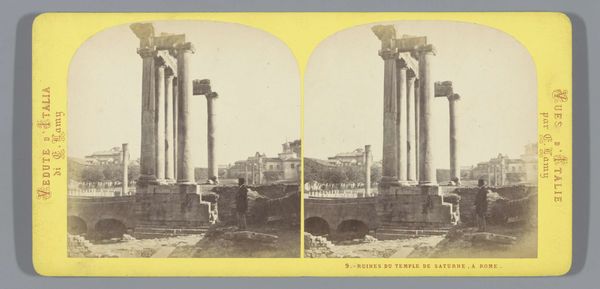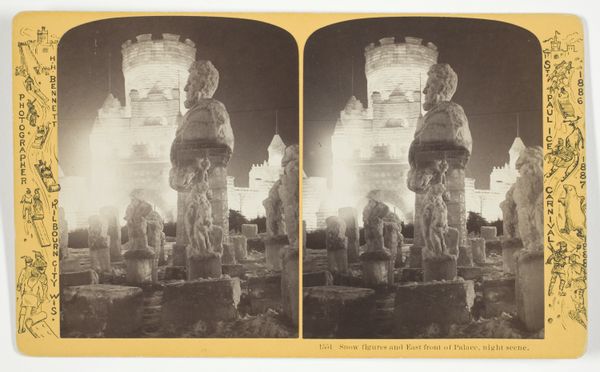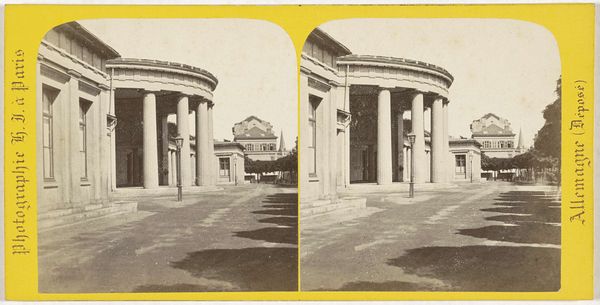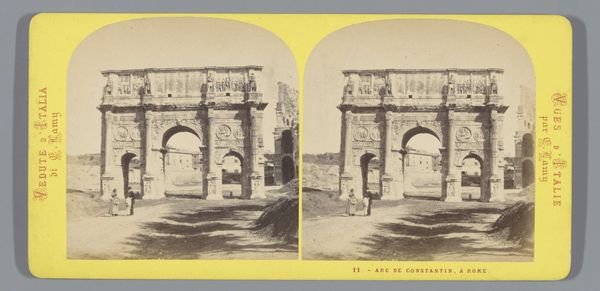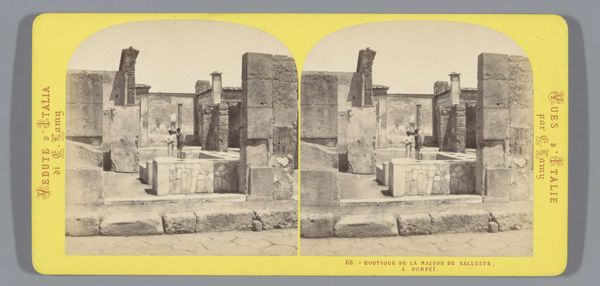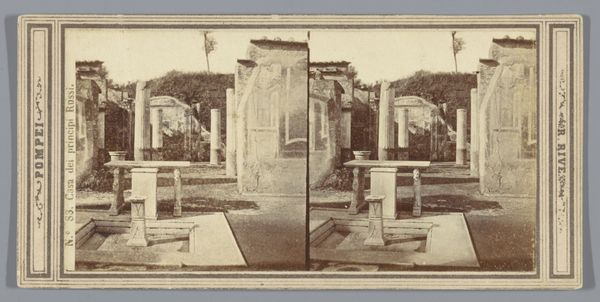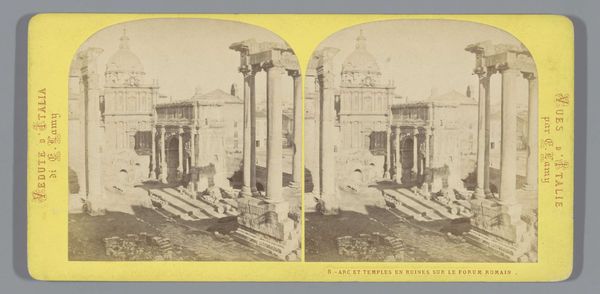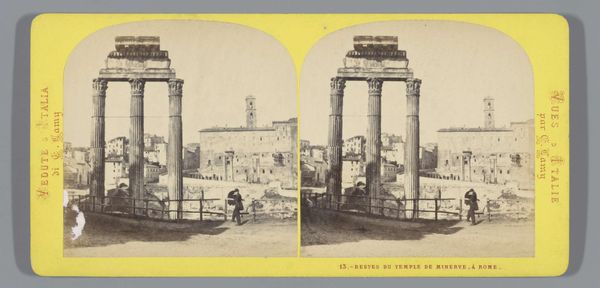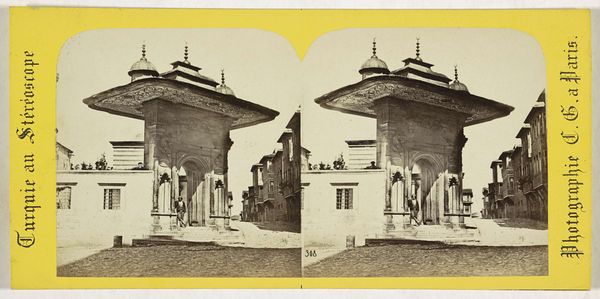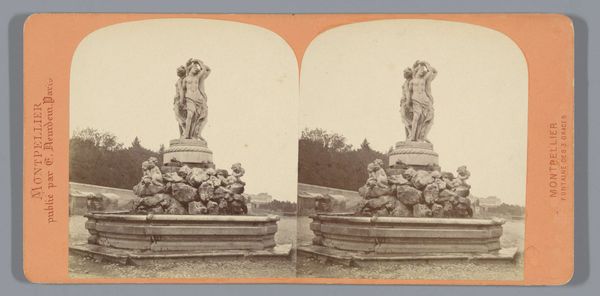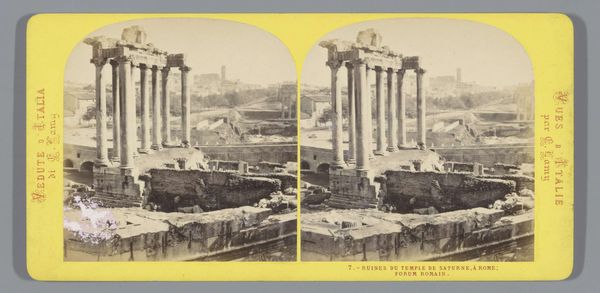
Dimensions: height 87 mm, width 178 mm
Copyright: Rijks Museum: Open Domain
Editor: This is a photograph from between 1861 and 1878 by Ernest Eléonor Pierre Lamy, a gelatin silver print, titled "Tempel van Hercules Invictus op het Forum Boarium, Rome". I am immediately struck by the starkness of the image. It feels quite formal, even a bit detached. What story do you think this photograph is trying to tell? Curator: This image is more than just a record of a Roman temple. Think about the 19th century and the rise of Neoclassicism. What social and political ideologies did this artistic movement often support? Editor: Well, Neoclassicism looked back to ancient Greece and Rome for inspiration. It was about order, reason, and… civic virtue? So, it aligned with the values of the Enlightenment and the rise of republics. Curator: Precisely. Consider this photograph then: the meticulously composed scene, the crisp detail afforded by the gelatin silver print, and the classical subject matter. Lamy isn't just showing us a temple. What is he suggesting about power, history, and even colonialism in this visual construction? Editor: So, by documenting this Roman temple, is he not only capturing history, but also aligning the present –19th-century Europe– with that history, implying a kind of inheritance of power and a continuation of civilization, potentially even justifying colonial ambitions? Curator: Exactly. The seemingly objective photographic lens is never truly neutral. It is always framing, selecting, and, therefore, interpreting. It's vital to ask: Whose stories are privileged by these kinds of images, and whose are marginalized? This photograph presents Rome’s grandeur, but omits much context. What about those who weren't part of the power structure? Editor: I hadn't considered that the photograph itself could be an argument, positioning certain values and powers as timeless and inevitable. It's fascinating to think about photography not just as documentation but as an active participant in shaping historical narratives. Curator: And by recognizing that, you start to unravel the complex interplay between art, history, and ideology, revealing the nuanced layers within seemingly simple images.
Comments
No comments
Be the first to comment and join the conversation on the ultimate creative platform.
